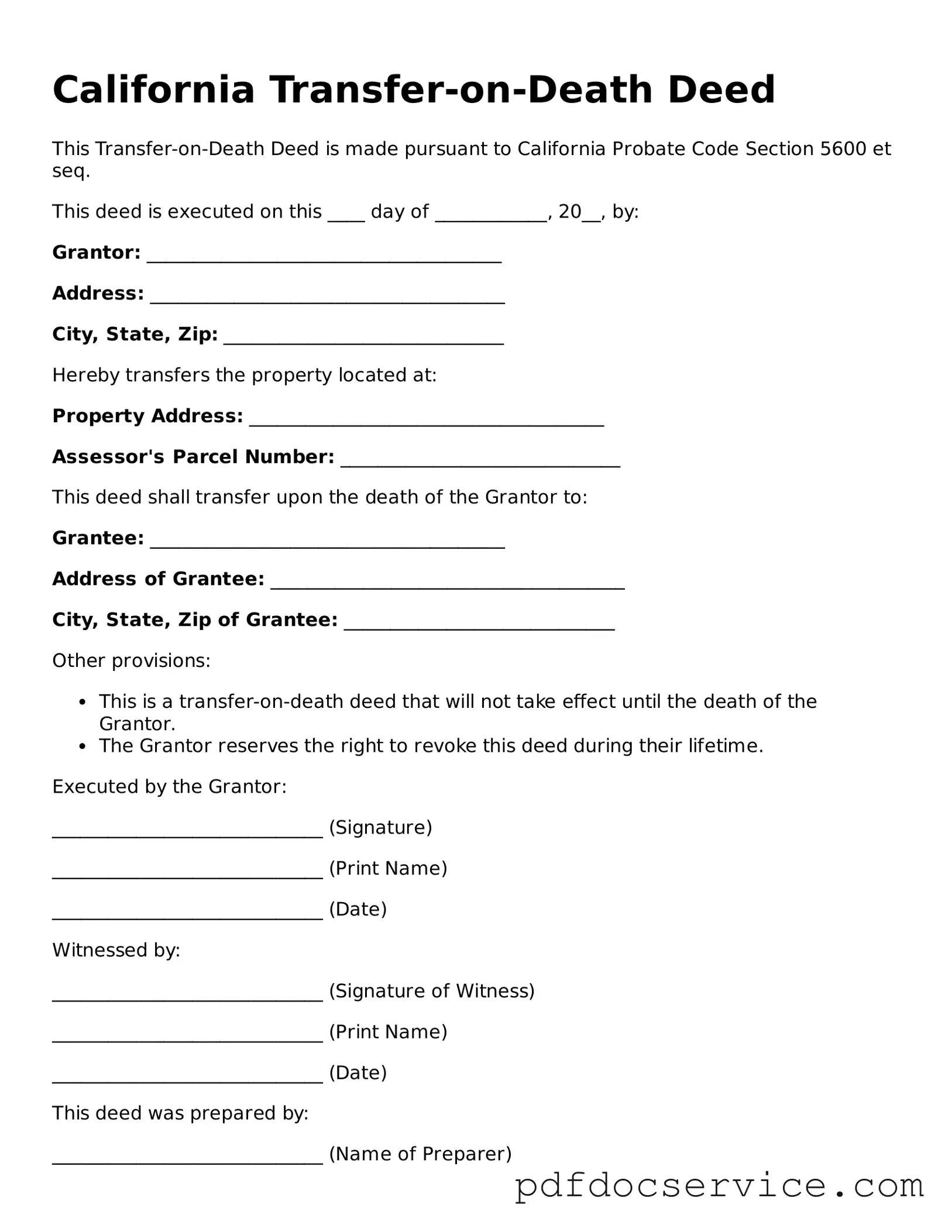What is a Transfer-on-Death Deed?
A Transfer-on-Death Deed (TODD) is a legal document that allows property owners in California to transfer their real estate to a designated beneficiary upon their death. This deed enables the transfer to occur outside of probate, simplifying the process for the heirs.
Who can use a Transfer-on-Death Deed?
Any individual who owns real property in California can utilize a Transfer-on-Death Deed. This includes single owners, co-owners, and married couples. However, the property must be solely owned or held in a way that allows for a transfer upon death.
How do I create a Transfer-on-Death Deed?
To create a Transfer-on-Death Deed, follow these steps:
-
Obtain the Transfer-on-Death Deed form from a reliable source.
-
Fill out the form with accurate property details and the beneficiary's information.
-
Sign the deed in front of a notary public.
-
Record the deed with the county recorder's office where the property is located.
Can I change or revoke a Transfer-on-Death Deed?
Yes, a Transfer-on-Death Deed can be changed or revoked at any time before the property owner's death. To do this, you must complete a new deed or a revocation form, sign it, and record it with the county recorder's office.
What are the benefits of using a Transfer-on-Death Deed?
Using a Transfer-on-Death Deed has several advantages:
-
It avoids probate, saving time and money for the beneficiaries.
-
The property owner retains full control of the property during their lifetime.
-
It provides a clear and straightforward way to transfer property to heirs.
Are there any limitations to a Transfer-on-Death Deed?
Yes, there are some limitations. A Transfer-on-Death Deed cannot be used for:
-
Property held in a trust.
-
Property with existing liens or encumbrances that may complicate the transfer.
-
Community property without the consent of both spouses.
What happens if the beneficiary predeceases the property owner?
If the designated beneficiary dies before the property owner, the Transfer-on-Death Deed becomes void. The property owner should consider naming alternate beneficiaries to ensure the property still transfers as intended.
Is legal assistance necessary to complete a Transfer-on-Death Deed?
While legal assistance is not required, it is advisable to consult with an attorney or a qualified professional. They can provide guidance and ensure that the deed is filled out correctly and complies with California law.
